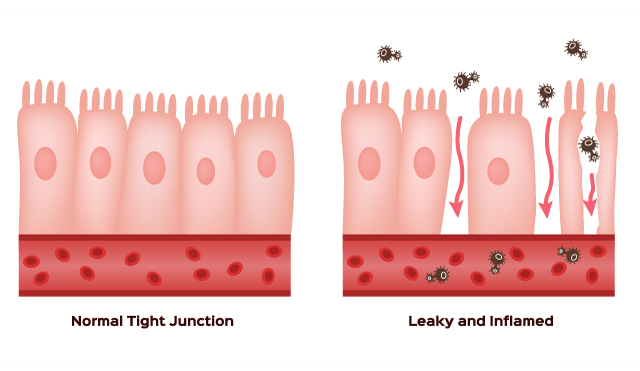Color blindness 10X more common in men; genetic therapies promise vision hope
07/17/2025 / By Willow Tohi

- Color blindness is X-linked recessive, explaining why males — having one X chromosome — suffer disproportionately (1 in 12) compared to females (1 in 200).
- Red-green deficiency dominates, caused by faulty genes in red or green cone cells; blue-yellow variants exist but are rarer.
- Males inherit the condition solely from their mothers, while females need defective genes on both X chromosomes to exhibit symptoms.
- Macular degeneration, chloroquine, glaucoma and toxins can trigger acquired color vision loss in later life.
- Gene therapy trials and experimental supplements like vitamin A/carotene offer hope, though cures remain elusive.
Color blindness, a condition robbing millions of the full spectrum of vision, disproportionately targets males. An estimated 300 million people worldwide face hurdles distinguishing colors, but statistics starkly divide the sexes: 8% of men and 0.5% of women grapple with red-green color blindness — the most common form. This genetic paradox has its roots in a single chromosome, unraveling a medical mystery with profound implications for genetic research. As science advances, groundbreaking therapies and nuanced insights into cellular mechanics promise to reshape how millions perceive the world.
The genetic blueprint: Chromosomal hardwiring and color vision’s gender divide
The foundation of color blindness lies in the X chromosome, a veritable “message carrier” for eye health. Three types of cone cells — red, green and blue — detect light wavelengths, but faulty genetic coding in the X chromosome disrupts this system, leading to color vision deficiencies.
As Dr. Usiwoma Abugo, a clinician with the American Academy of Ophthalmology, explains, “When one or more of these color cone cells are absent or malfunctioning, color blindness occurs.” Red-green deficiencies, the most prevalent, stem from mutations in genes OPN1LW (red) or OPN1MW (green), both situated on the X chromosome.
Herein lies the gender divide:
- Males, inheriting one X (from the mother) and one Y (from the father), have no backup. A single faulty gene on the X chromosome guarantees the condition.
- Females, with two X chromosomes, require defective genes on both chromosomes to exhibit symptoms — making them 200 times less likely to be affected.
This X-linked recessive inheritance pattern explains a striking global disparity: 1 in 12 men versus 1 in 200 women carry the condition, per data from Cleveland Clinic.
Beyond red and green: A spectrum of vision deficiencies
While red-green color blindness dominates headlines, less common variants — like blue-yellow deficiencies and monochromacy — add layers of complexity to the condition.
- Blue-yellow anomalies: These occur when blue-sensitive cones (S cones) malfunction, disrupting perception of blue and yellow hues. Unlike red-green defects, this type strikes males and females equally, affecting approximately 1 in 10,000.
- Monochromacy: Stunningly rare (1 in 30,000 cases), complete color blindness (achromatopsia) leaves sufferers in a monochrome world. Extreme light sensitivity often accompanies the condition.
- Blue cone monochromacy: More severe, this form — which affects 1 in 100,000 — prevents the brain from processing red and green, leaving only blue hues. Sufferers also face night blindness and poor visual acuity.
Each type underscores the precision required in genetic mapping to address treatments.
Environmental and pathological triggers: Color loss beyond genetics
While genetic defects are the prime culprits in congenital cases, external factors also exact a toll. Certain medications, eye diseases, and toxins can trigger acquired color blindness later in life.
- Drug-induced loss: Long-term use of chloroquine (for malaria) and hydroxychloroquine (rheumatoid arthritis) has been linked to retinal damage, warping perceived colors.
- Vision diseases: Glaucoma, aging-related macular degeneration, and diabetic retinopathy degrade cone cells, sometimes stripping hues from the visual spectrum.
- Toxins: Prolonged exposure to organic solvents or heavy metals may disrupt neural pathways governing color processing in the brain.
Dr. Abugo notes, “Women can also experience color blindness, but it’s rare and usually arises from non-genetic causes like optic nerve inflammation or neurological diseases.”
Aiming for full color: Genetic engineering and dietary hints offer new hope
Though no cures exist for inherited color blindness, leaps in genetic science and fringe therapies hint at future breakthroughs.
- Gene therapy trials: Researchers are testing viral vectors to deliver functional cone-cell genes to eyes. In animal models, this approach restored full color vision to those with genetic red-green deficiencies. Early human trials are underway, offering cautious optimism.
- Experimental “color glasses”: Filters marketed for mild cases enhance contrast between colors for some, though they don’t “cure” the condition.
- Nutritional interventions: Anecdotal reports suggest vitamin A (5,000 units/day) and beta-carotene (25,000 IU) support eye health, though large-scale studies are needed to confirm their role in alleviating symptoms.
A chromosomal canoe unto a cured horizon
Centuries of discovery have shifted color blindness from enigma to explainable — yet widespread. With the genetic blueprint mapped, science now chisels at a bolder vision: one where therapies reclaim color for those born without it. As biological sex continues to shape medical research, the collective drive for equitable solutions ensures that no chromosomal fate is irreversible in the pursuit of sight.
For the millions enduring the muted palette of color blindness, hope blooms in cutting-edge labs — whether through viral vectors rewriting genetic code or glasses sharpening fringe hues. The path is long, but small advancements daily dissolve the boundaries between mystery and remedy.
Sources for this article include:
Submit a correction >>
Tagged Under:
color blindness, color vision loss, eye health, gene therapy, genetic lunacy, genetics, health science, medical research, men's health, research, truth, vision, vitamin A, women's health
This article may contain statements that reflect the opinion of the author




















